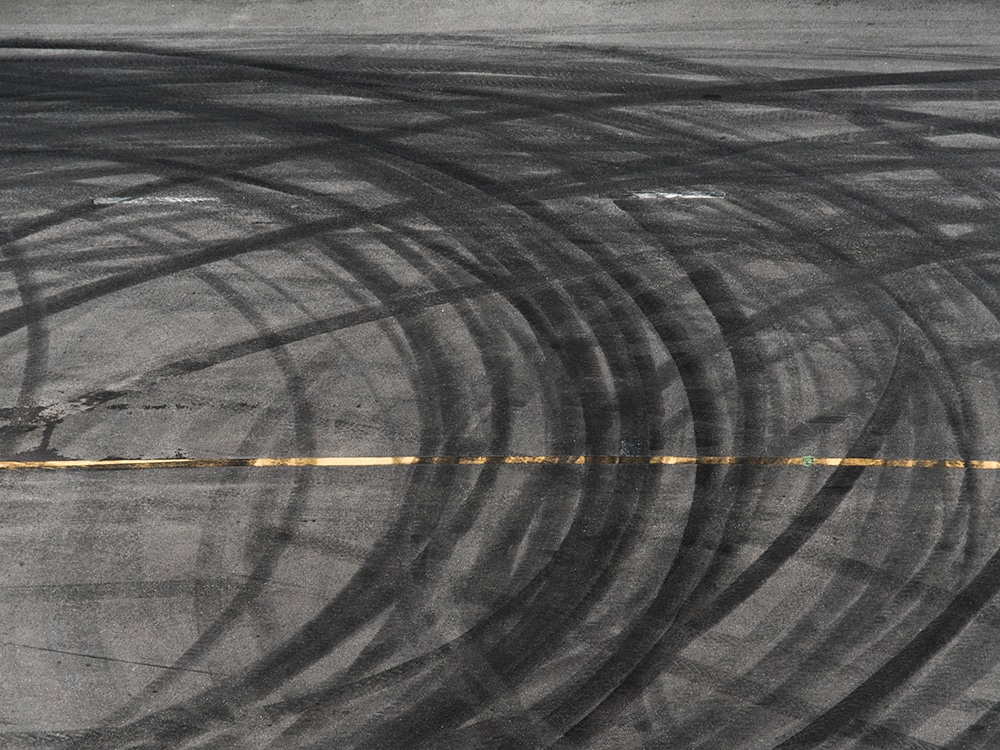Updated on December 4, 2020
Black tire marks are an unfortunate reality of a car on your concrete driveway or garage floor. Here, we discuss how to remove tire marks from concrete or epoxy surfaces.
The method you use to remove tire marks depends on where the mark is in your garage or driveway.
RELATED: How to Clean Concrete
Removing tire marks from a concrete driveway
If your driveway has a decorative concrete coating, follow the following steps. This information also applies if you’re looking into how to get burnout marks off concrete.
See SUNDEK’s Maintenance Guide for detailed information on removing black rubber marks and grease or oil stains.
Get a cleaning estimate
From your local SUNDEK dealer
Removing tire marks from an epoxy garage floor
If your garage floor has an epoxy finish, follow these cleaning steps.
Caution: When searching online for how to clean tire marks off concrete, you might see alternate remedies such as Goof Off.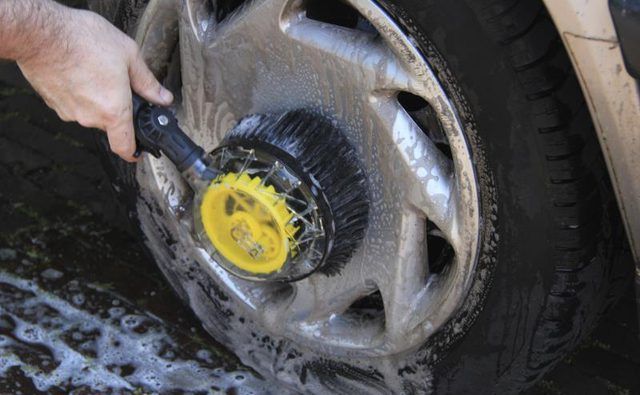 From experience, we have found Goof Off to be too harsh, so we do not recommend it to remove tire marks from concrete or epoxy.
From experience, we have found Goof Off to be too harsh, so we do not recommend it to remove tire marks from concrete or epoxy.
If you have an alternate product you’d like to try, or you want more information about how to get tire marks off concrete, contact us.
Although you can’t prevent tire marks, you can prevent buildup that will make the tire marks harder to clean. We recommend hosing off and cleaning the affected area on a regular basis to prevent a heavy buildup.
Some customers place mats on the floor where their tires will be resting while parked in their garage.
If you’re curious why tire marks happen, Chris Sullivan provides a summary of the chemical process behind tire marks (from an article on ConcreteNetwork.com):
“This is a phenomenon called “plasticizer migration.” Plasticizer are polymer compounds added to rubber, glue and plastic to make them flexible. The rubber used to make car tires contains plasticizer to improve traction.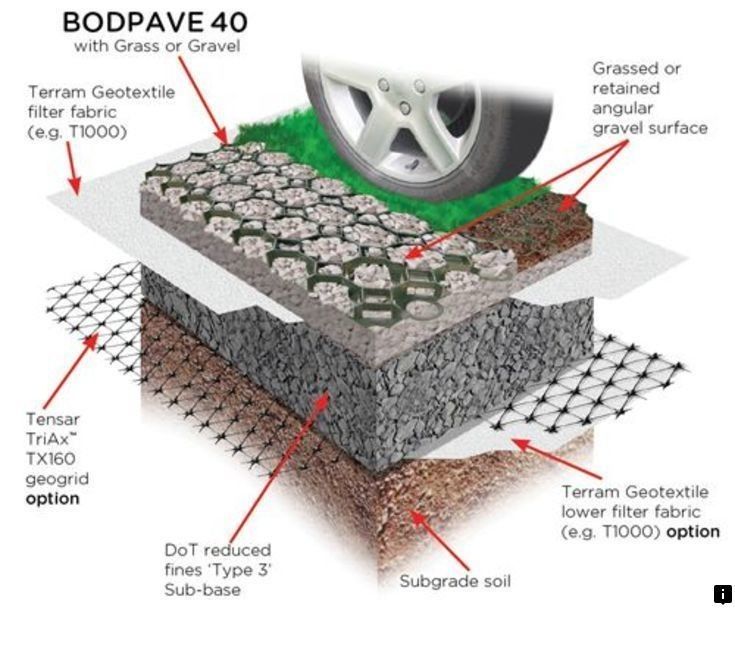 But when the car is driven, the tires heat up, causing the plasticizer to soften and leach out of the tire. When a hot tire is parked or driven on certain types of sealers, the plasticizer migrate into and discolor the sealer. The better the tire quality, the higher the quantity of plasticizer —and the greater the chance for hot tire marking. Lower-quality tires are harder and contain less plasticizer, so they usually result in less hot tire marking on sealers.”
But when the car is driven, the tires heat up, causing the plasticizer to soften and leach out of the tire. When a hot tire is parked or driven on certain types of sealers, the plasticizer migrate into and discolor the sealer. The better the tire quality, the higher the quantity of plasticizer —and the greater the chance for hot tire marking. Lower-quality tires are harder and contain less plasticizer, so they usually result in less hot tire marking on sealers.”
Related: Sealing Concrete Driveways
If your tire marks are especially stubborn, or you can't get rid of them completely, consider stripping and resealing your concrete or even resurfacing with a concrete coating.
It's time to get rid of that pesky tire scuff you've been meaning to clean up but haven't gotten around to. You've decided today is the day and you're wondering how to get tire marks off concrete. The answer is not as obvious as it might seem, but you may have realized that already if you've tried to wash it off to little avail. Luckily we've put together this guide on the best way to remove tire marks from concrete.
The answer is not as obvious as it might seem, but you may have realized that already if you've tried to wash it off to little avail. Luckily we've put together this guide on the best way to remove tire marks from concrete.
Here's our step by step guide on how to remove tire marks from concrete and get your driveway or garage floor looking pristine again.
Step 1. Clear the concrete floor of any debris
You'll want to make sure that you get all items off your garage floor or driveway. Make sure to cover up anything that might be in the way and could get wet or damaged. You'll also want to make sure you cover up any delicate plants in the surrounding area to ensure they are protected.
Step 2. Pour degreaser on the tire marks and let it sit
Use some concrete degreaser, like our CSP Degreaser, and pour it onto the scuffs and let it set for about 30 minutes while ensuring that you don't let it dry. The key here is to not let the degreaser dry, so continue adding more as needed to keep it saturated wet. During warmer months try to do your work in the cool part of the day and with less sun so it does not dry out as quickly.
The key here is to not let the degreaser dry, so continue adding more as needed to keep it saturated wet. During warmer months try to do your work in the cool part of the day and with less sun so it does not dry out as quickly.
Step 3. Scrub the area with a stiff straw brush
While some people say that they only need to pour on the CSP and allow it to sit a few minutes and then it will power wash right off, we still find that scrubbing it with a straw brush usually gets it up better. Scrub the area using our high quality Straw Concrete Scrub Brush to move the degreaser around as it soaks in, and after the 30 minutes aggressively scrub it once more. You can also use a floor scrubber or floor buffing machine with the black aggressive scrubbing/stripping pad.
Step 4. Apply some more degreaser and continue scrubbing
You should apply some more degreaser after a few minutes and scrub some more.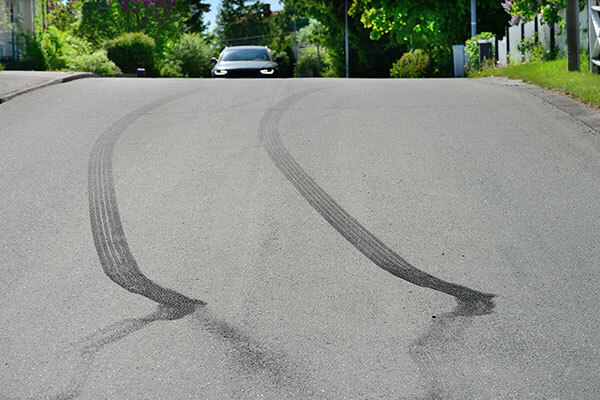 You won't usually need to do too much scrubbing at this point, but it's best to apply some more and give one last scrub.
You won't usually need to do too much scrubbing at this point, but it's best to apply some more and give one last scrub.
Step 5. Wash it off with a power washer
You can use a power washer or a sprayer nozzle to wash off the degreaser. If you are indoors, you can use a mop to wash it off.
Things to keep in mind
The CSP degreaser/cleaner is great for normal tire marks. Especially in garages, homeowner driveways, and the such. For really intense and massive tire marks such as on a commercial driveway or parking lot, while it usually works fine, if the CSP degreaser isn't strong enough, then you may need to move towards a harsh chemical such as Xylene.
It's also important to note that the CSP degreaser will work to strip concrete sealers. So while it's great for cleaning and prep, you shouldn't use it on sealed concrete unless you intend to strip the surface of the sealer for re-sealing. Just be aware that you should only use the CSP degreaser sparingly on sealed concrete and understand that you are still slowly stripping the sealer.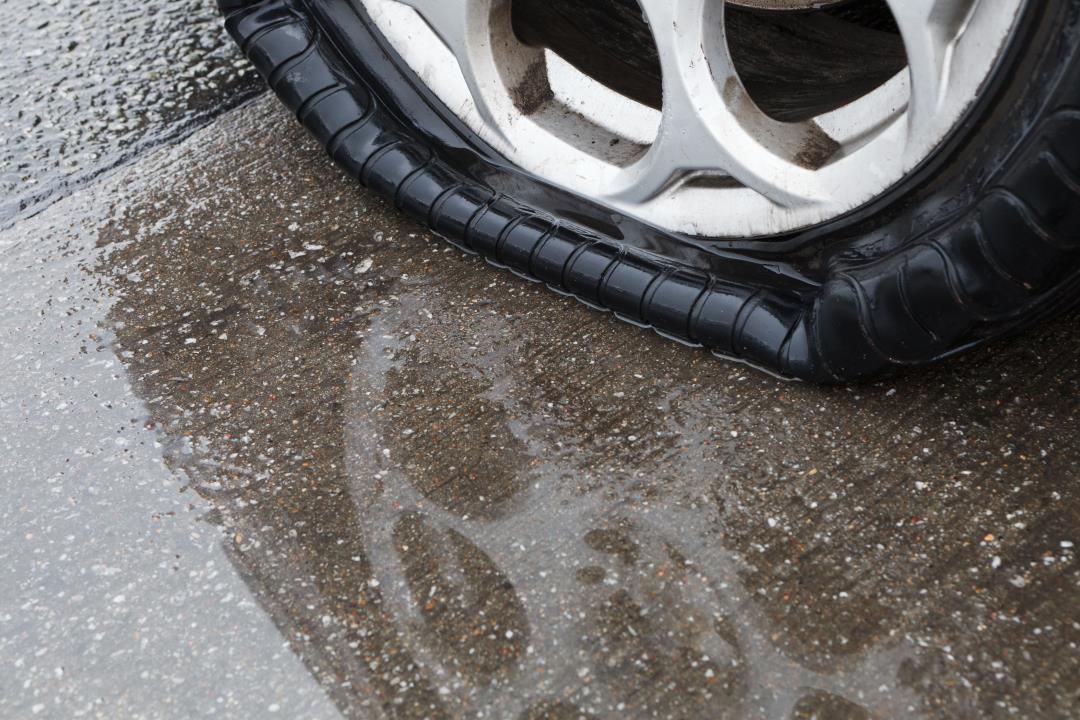
Planning to reseal? Make sure to check out our guide on sealing concrete and our Clear Shield water based sealer to ensure you get a long lasting finish on your newly cleaned concrete floor.
Add To Cart
View Product
Make a paste of 1 part warm water and 3 parts baking soda in a small bowl. Apply the paste on the stain and leave for 5 minutes. If the stain is persistent, leave on for 15 minutes. Scrape off the paste with a toothbrush and tissue, and then wipe off any excess paste with a clean rag.
Traces of from rubber, shoe polish and other oily substances can be carefully removed with gasoline. In the absence of fleecy fabric in the household, it can also be useful for removing stains from candles. nine0003
Pre-treat oil stains and tire marks before attempting to clean the entire surface. This can be done by covering the stains with laundry detergent. Pour a generous amount of detergent directly onto the stain.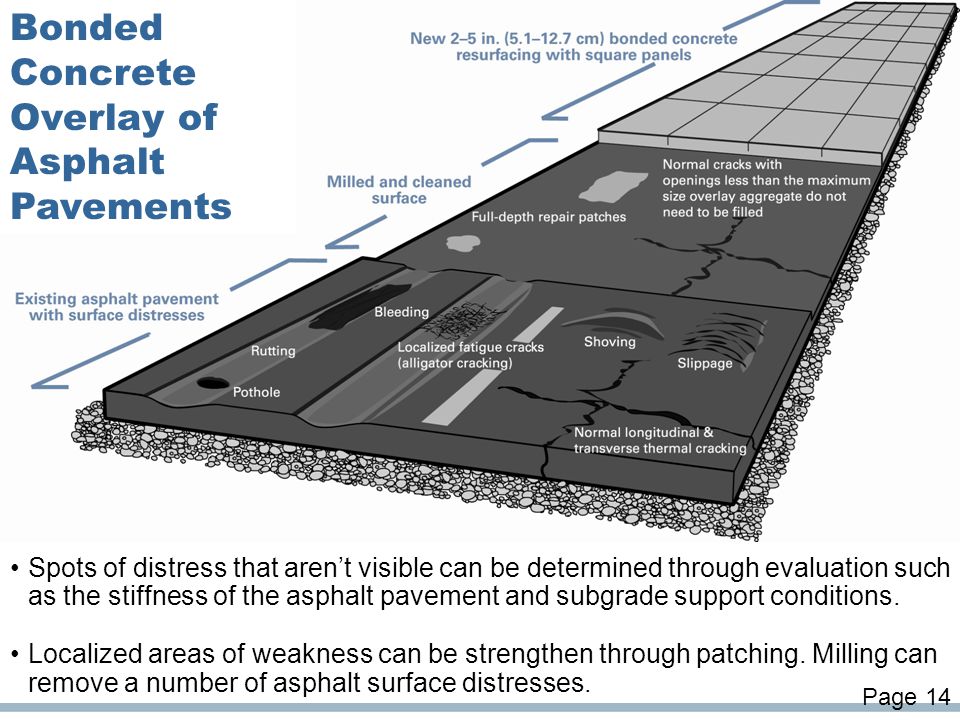
Buy regular glycerine from a drug store, mix 100 grams of glycerine with 100 grams of water, then apply with a sponge to the rubber. Do not spare water, otherwise dust will stick to tires . Another tires are blackened with silicone oil, which will save tires in cold weather, protect against cracks and sunlight that age rubber.
It is safe for rubber but effectively removes yellowness. If the product is small, it can be completely immersed in liquid. When this is not possible, peroxide is applied to a cotton pad and treated with stain .
Mix water and baking soda, apply the mixture on the stain, let it dry, and finally rinse the area with warm, clean water. Spot on on paper wallpaper try to treat with dry baby powder (or talcum powder) and leave for a while.
If putty has ingrained into the structure of linoleum, it can be removed with mineral spirits. Traces of adhesive tape or plaster, on which dirt and dust have stuck, can be easily removed with vegetable oil or vodka.
Yellow spots on linoleum while still fresh, wash with a warm solution of 72% laundry soap. To do this, it must be grated on a fine grater and dissolved in warm water (100 g of chips per bucket of water). Soak a sponge, cloth or brush in the resulting solution and work spot . Then wipe the floor dry.
Within 5-7 minutes the bleach will react with the pigment and the stain will gradually disappear. Instead of pure bleach, you can use ready-made products containing chlorine, such as Domestos or Whiteness. Important! After bleaching on dark linoleum, whitish traces may remain.
Laundry detergent will react with wet asphalt and then begin to peel off dirt from the surface layer of asphalt . 4. Mix the cleaning agent with water in a container. The proportion of the solution is the following proportions, 1 part washing powder, 3 parts water and 1 part laundry bleach.
It is necessary to quickly cover it with sand, caustic soda or cement, and then simply remove all .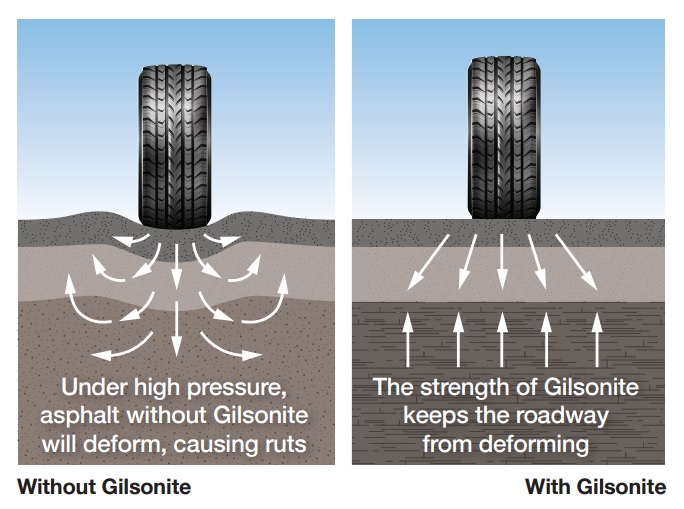 Remaining stains can be washed off with solvent (solvent, white spirit, etc.), detergents.
Remaining stains can be washed off with solvent (solvent, white spirit, etc.), detergents.
As soon as a stain of engine oil or diesel fuel appears on asphalt , it is covered with sand, cement, caustic soda. Then they sweep away the remnants, wash everything off with water from a hose or a watering machine. Mechanical cleaning is not recommended. nine0003
Siral powder (or pemolux - less foam from it) + fine fine sand, mix, add water (not much) so that the consistency is - a la ice cream 5-10 minutes after getting out of the refrigerator ... .. you can stupidly and in fairies throw a little abrasive .... the very collective farm - a helmet for rubber - and forward !!!
Often we washed the wheels by simply placing them in a bowl of water and slowly turning it in the water to wash away all the dirt. The wheel (rims and spokes) are not afraid of water, but after washing with a jet, it is still better to wipe them again with a sponge, and then with a dry cloth.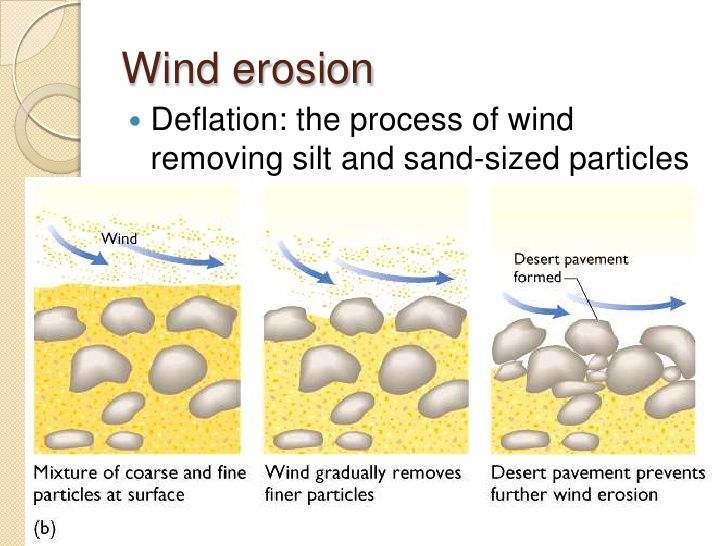 nine0003
nine0003
Substances such as nail polish remover (acetone), gasoline, kerosene, turpentine are aggressive to many materials. Use them very carefully.
…
Vinegar and whiteness
During operation, the paving surface is exposed to various external and mechanical factors, as a result of which dirt and stains may appear on the pavement. Some of these contaminants are quite easily cleaned with household chemicals, but sometimes a whole range of care measures using professional products is required to restore the appearance of the paving. nine0003
We have compiled a detailed overview of how to get rid of different types of stains on paving slabs.
Fresh oil stains (machine oil, diesel fuel, etc.) can be removed using absorbent materials - paper towels, rags, sawdust. In this case, one should not resort to increased friction in order to avoid contamination of a larger surface of paving slabs. Stubborn oil and grease stains should be removed using organic solvents - white spirit, solvent, etc. (be careful on colored coatings!).
Stubborn oil and grease stains should be removed using organic solvents - white spirit, solvent, etc. (be careful on colored coatings!).
Among modern building chemicals, it is recommended to use cleaning agents MC Entoler, Basf PCI Entoeler. You can also use a special biosorbent "Ekolan M" , which decomposes petroleum products. Contaminated sand in the tile joints should be replaced with clean sand.
White spots on paving slabs are the result of efflorescence (white salt deposits) and lime deposits. After 1-2 years of operation, efflorescence, as a rule, disappears under the influence of rains.
To quickly remove efflorescence and improve the appearance of paving , special chemical compositions are used - “Tiprom”, “Neomid” . Depending on the degree of contamination, the product must be dissolved in water in the required proportion, determined by the work instructions. The resulting solution is applied with a brush, roller or brush on a pre-moistened surface. The formation of a foaming film in the first seconds of processing is a sign of the efflorescence neutralization reaction. nine0003
The formation of a foaming film in the first seconds of processing is a sign of the efflorescence neutralization reaction. nine0003
The consumption of the working composition is on average 200 grams per square meter of coating. At the end of the treatment, the paving surface must be additionally rinsed with water from a watering hose.
To remove traces of cement mortar, you can use Neomid anti-efflorescence or Donnitil 3 X powder from MC Bauchemie. These cleaners are highly effective against a wide range of contaminants. nine0003
Bitumen stains can be removed with a hard wire brush or scraper . Cleaning is best done in winter (or use ice) when the bitumen becomes brittle, brittle and easily crumbles from the surface of paving slabs.
In some situations, traces of rust may appear on paving slabs. For example, the impact of a special equipment bucket on a paving surface leads to the formation of scratches and chips on the tiles, which over time are pigmented with iron particles and acquire a rusty tint. nine0003
nine0003
Rust can also appear in raw materials for the production of paving stones (sand), as well as in pallets in the warehouse of finished products when stored in several tiers. Under the action of rain, the metal nails in the transport pallets rust and the resulting solution flows onto the underlying rows of products, staining them in yellowish stains.
MC-Rost EX has been successfully used to remove rust . It should be borne in mind that the components that make up the cleaner react with concrete, which can lead to leaching of coloring pigment particles (on colored tiles) and exposure of aggregate grains. Therefore, immediately after applying the remedy must be thoroughly washed off with plenty of water .
Chewing gum and graffiti are best removed with hot steam or special cleaners , such as PCI® Silconal AG Basf wax-based protective sealant. You can also use regular brushes with hard bristles, but with caution - there is a risk of scratching the surface. nine0003
nine0003
Car tire marks can also be removed using hot steam or household detergents (street shampoos) dissolved in hot water.
Remove soot from paving slabs with normal soap solution . For heavier soiling, you can use a mixture of laundry detergent and bleach (no chlorine!). In both cases, after using detergents, they must be washed off with plenty of water.
Stones and paving slabs with a textured surface of Stonemix can be heavily contaminated due to the ingress of dirt, clay and black soil into the voids between the grains of exposed aggregate. Thus, the grainy surface of the tile is clogged with debris, aesthetics are lost.
Donnitil 3 X High Performance Cleaner from Bauchemie MC can be used to clean these stains. The product is supplied as a fine powder. The concentration of the solution is selected depending on the degree of contamination of the coating. An additional advantage of this material is its ability to neutralize efflorescence on the coating. The algorithm of action of the product is similar to the principle of operation of the remedies for efflorescence indicated above. nine0003
An additional advantage of this material is its ability to neutralize efflorescence on the coating. The algorithm of action of the product is similar to the principle of operation of the remedies for efflorescence indicated above. nine0003
For regular dry cleaning of debris or dust, you can use dry brushes, sweepers or garden vacuum cleaners (such as Karcher, STIHL, etc.) . It is strictly forbidden to use tools or mechanized cleaning equipment with a metal working part, which can damage the top layer of the paving surface.
Once a month paving slabs require wet brushing or washing . When wet cleaning, it is recommended to direct the water jet at a low angle to the coating in order to minimize any risk of damage to the tile joints (if the joints are damaged, they must be spilled with sand).
In European practice , for regular cleaning of the coating, the so-called outdoor shampoos are used, which are a complex of surfactants that allow you to clean the surface of dirt, traces of rubber and refresh the color of the coating.